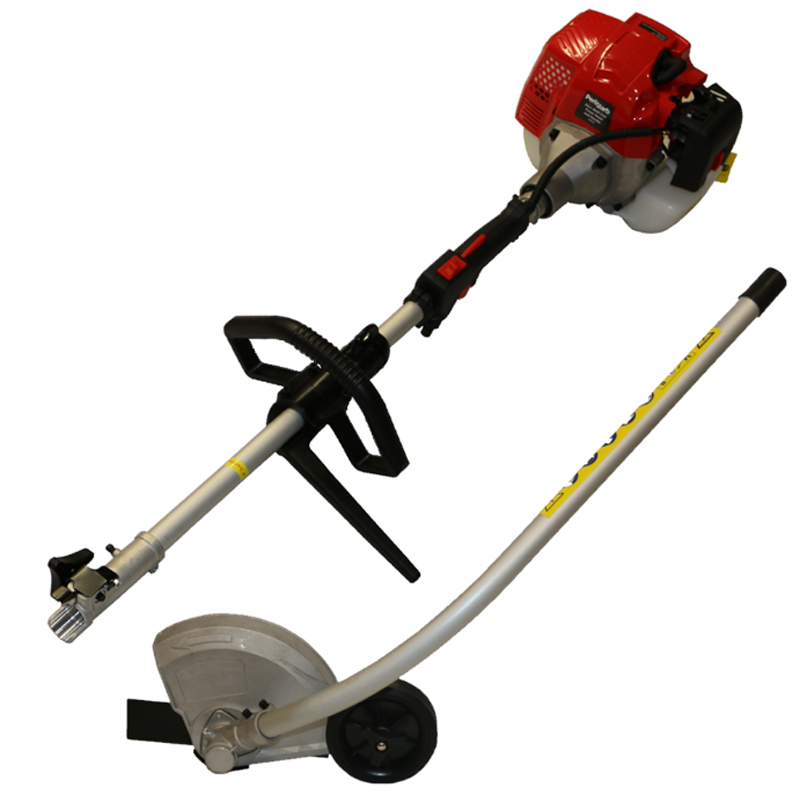Tips and Tricks for a Top-Performing Brush Cutter
Brush cutters are a popular choice for keeping lawns and gardens neat and tidy—but they can be tricky to maintain. A single misstep, like hitting a rock, can send the blade flying and leave you scrambling to replace it. Brush cutters require consistent care to function properly and last longer. Whether you're using it for light trimming or heavy-duty cutting, proper maintenance is key to avoiding costly repairs and downtime. In this guide, we’ll walk you through the best practices for maintaining your whipper snipper, replacing blades, and ensuring safe operation. Let’s dive in! To keep your brush cutter running smoothly, regular maintenance is essential. Some tasks should be done daily, while others require weekly or monthly attention. Knowing what to do when can save you time, money, and frustration down the road. Daily checks might seem small, but they play a big role in preventing bigger issues. Weekly and monthly routines help keep everything in top shape and extend the life of your equipment.  Start with the basics: air filters, trimmer heads, blades, and guards. These components need constant attention. Replace your air filter every 25 hours of use or when it becomes too dirty to function effectively. Dull or damaged blades not only reduce efficiency but can also cause excessive vibration. Before each use, visually inspect the blade for cracks and ensure it's centered and sharp. The trimmer head should also be checked for damage. While guards are durable, they’re there for your safety—replace them if you notice any signs of wear or damage.  Once a week, clean the spark plugs, cooling fins, and carburetor. Change the oil every 50 hours or at least once per season. Lubricate moving parts every 25 hours to prevent rust and damage. When cleaning spark plugs, remove each one and check for wear. If they're worn or fouled, replace them to ensure smooth engine performance.  Perform a full maintenance routine once a month. Clean all components, including the fuel tank, fan, and carburetor. The fuel filter should be replaced after 100 hours of use to prevent clogging.  Blades are crucial for your brush cutter’s performance. If they’re dull or damaged, your tool will struggle. Follow these steps to replace them:  There are three main types of blades: chisel, mulching, and knife. Each has its own strengths and ideal uses. Chisel blades are great for thick brush and small trees but can be expensive and power-hungry. Mulching blades are less common and designed for leaf mulching. Knife blades are the most versatile and cost-effective option, though they can dull quickly if they hit rocks or hard objects.  Proper storage can significantly extend the lifespan of your brush cutter. Store it in a cool, dry place away from direct sunlight. Use a protective cover to keep dust and moisture at bay. Always store the unit upright to avoid fuel leaks. If storing for an extended period, drain the fuel tank completely to prevent clogging and degradation of internal components. Investing in a high-quality cover can protect your brush cutter better than a simple tarp or blanket, especially during long-term storage.  Even the best brush cutters can have problems. Common issues include difficulty starting, poor performance, and uneven cutting. Here’s how to fix them: If your brush cutter won’t start, check the fuel level, spark plug, and air filter. Replace old fuel if it’s been sitting for too long. Poor performance is often due to a worn blade—inspect the edge and replace it if needed. Uneven cutting is usually caused by a bent or damaged blade. Replace it if necessary to restore even performance.  Regular maintenance helps avoid expensive repairs and keeps your brush cutter running efficiently. Focus on the spark plugs, fuel system, oil, and air/fuel filters. Replace spark plugs when they show signs of wear. Clean or adjust the carburetor regularly to ensure smooth engine operation. Keep the oil clean and change it as recommended by the manufacturer.  Change the oil regularly to keep the engine running smoothly. Most manufacturers recommend changing the oil every 50 hours of use. If unsure, follow this guideline to protect your machine.  A dirty air filter can reduce engine performance and increase fuel consumption. Check the air filter regularly, especially if the engine isn’t running smoothly. Replace it when it gets too dirty or damaged.  Safety should always come first when using and maintaining a brush cutter. Here are some important tips to keep in mind:  Keeping your brush cutter in good working condition requires quality parts and regular maintenance. At Jono & Johno, we offer a wide range of chainsaw chains, bars, and spare parts to customers across Australia. Click here to browse our selection today.  Titanium Dioxide Anatase Uses Chart,Titanium Dioxide Anatase Uses Cookies,Titanium Dioxide Anatase Uses Data,Titanium Dioxide Anatase Uses By Guangdong Jintai Titanium Industry Co.,ltd , https://www.pzhjintaitio2.com
Â
Brush Cutter Maintenance Checklist
Daily Maintenance
Weekly Maintenance
Monthly Maintenance
How to Replace Brush Cutter Blades
Choosing the Right Blade Type
Best Practices for Brush Cutter Storage
Troubleshooting Common Brush Cutter Issues
Maintaining the Brush Cutter Engine
Oil Changes
Air Filter Replacement
Brush Cutter Safety Tips
Get Quality Brushcutter Parts at Jono & Johno!
